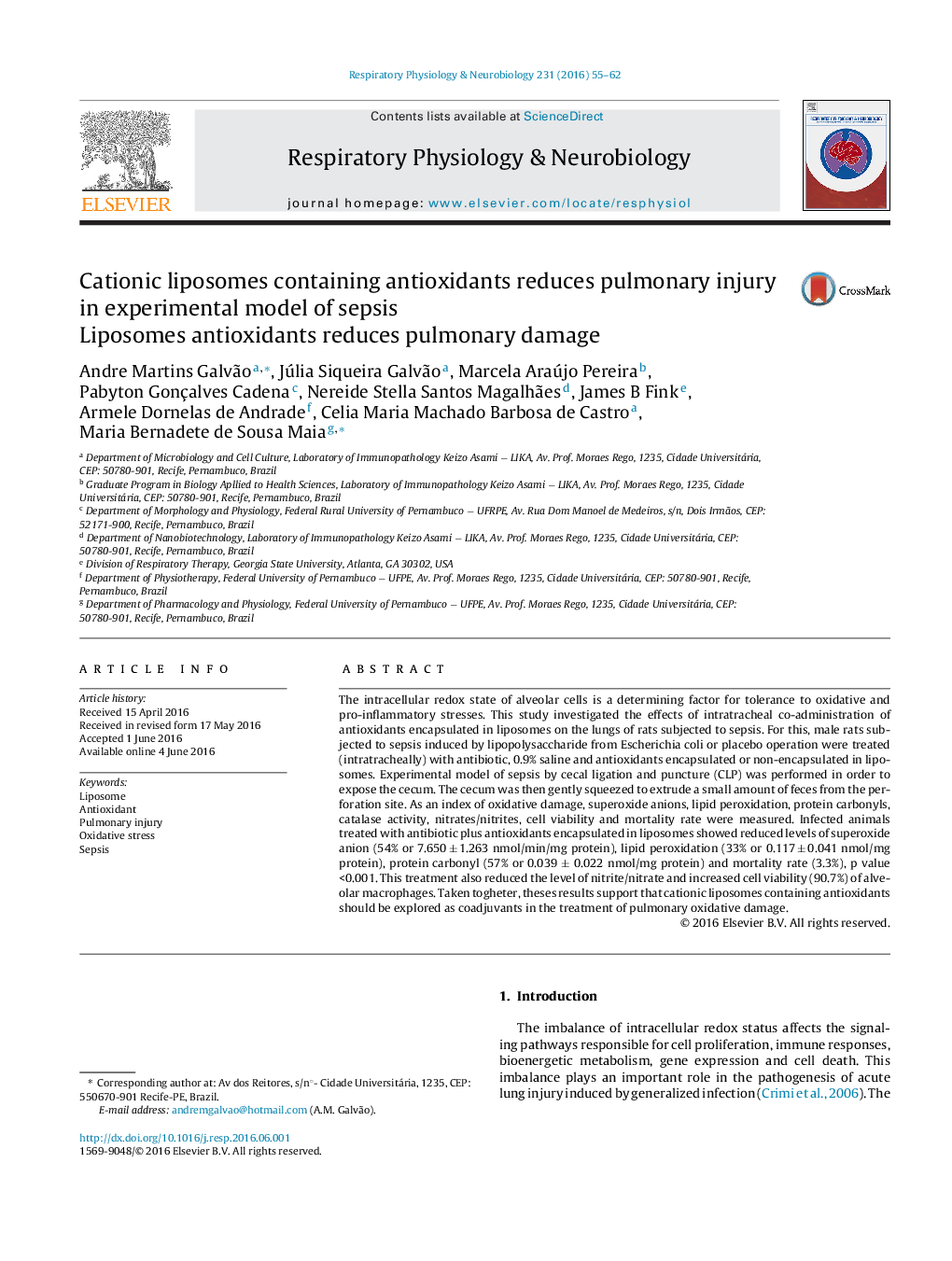| کد مقاله | کد نشریه | سال انتشار | مقاله انگلیسی | نسخه تمام متن |
|---|---|---|---|---|
| 2846639 | 1571299 | 2016 | 8 صفحه PDF | دانلود رایگان |
• In the present study, the potential clinical applicability of encapsulation of antioxidants in liposomes is investigated for mitigation of pulmonary injury and alveolar macrophage death by free-radical-related mechanisms.
• This co-administration significantly reduced pulmonary damage by decreasing superoxide anion production, lipid peroxidation, protein carbonyls, and improved survival.
AbstarctThe intracellular redox state of alveolar cells is a determining factor for tolerance to oxidative and pro-inflammatory stresses. This study investigated the effects of intratracheal co-administration of antioxidants encapsulated in liposomes on the lungs of rats subjected to sepsis. For this, male rats subjected to sepsis induced by lipopolysaccharide from Escherichia coli or placebo operation were treated (intratracheally) with antibiotic, 0.9% saline and antioxidants encapsulated or non-encapsulated in liposomes. Experimental model of sepsis by cecal ligation and puncture (CLP) was performed in order to expose the cecum. The cecum was then gently squeezed to extrude a small amount of feces from the perforation site. As an index of oxidative damage, superoxide anions, lipid peroxidation, protein carbonyls, catalase activity, nitrates/nitrites, cell viability and mortality rate were measured. Infected animals treated with antibiotic plus antioxidants encapsulated in liposomes showed reduced levels of superoxide anion (54% or 7.650 ± 1.263 nmol/min/mg protein), lipid peroxidation (33% or 0.117 ± 0.041 nmol/mg protein), protein carbonyl (57% or 0.039 ± 0.022 nmol/mg protein) and mortality rate (3.3%), p value <0.001. This treatment also reduced the level of nitrite/nitrate and increased cell viability (90.7%) of alveolar macrophages. Taken togheter, theses results support that cationic liposomes containing antioxidants should be explored as coadjuvants in the treatment of pulmonary oxidative damage.
Journal: Respiratory Physiology & Neurobiology - Volume 231, September 2016, Pages 55–62
